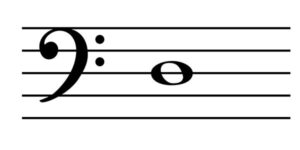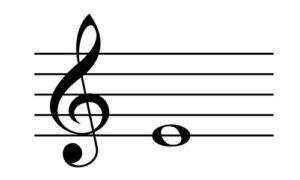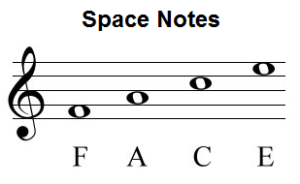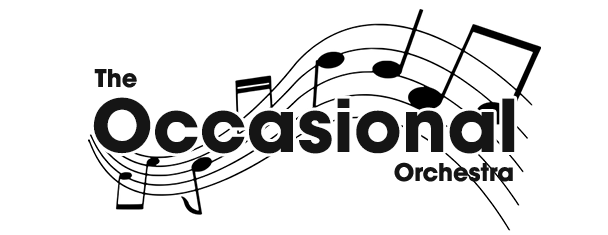For you to know what a treble clef is you must know first “what is a clef?”
Whatever reason you’re here, you’ve probably seen the 5 lines on which musical notes sit, this is called the “the stave”. until the clef is placed at the very beginning of the stave we do not know what to call the notes placed on the stave.
For example, this note is C if I used this clef (called alto)

However, it’s called a D note if I use this clef (called bass)

Therefore, the use of a clef is absolutely essential, so make sure you always add one at the start of a stave and each subsequent line. According to Britannica the word “clef” is originated from a French word “key”, and it’s really aptly named, because in musical notation, a symbol is placed at the beginning of the staff, determining the pitch of a particular line and thus setting a reference for, or giving a “key” to, all notes of the staff.
In short, a clef is a musical symbol used to indicate which notes are represented by the lines and spaces on a musical stave. If the clef could talk, it would say something like, “For this set of notes, the lines and spaces represent these keys.”
Music uses several different clefs, but as a piano player you’re in luck because you only need to know two, the treble clef and the bass clef and they are not that complicated. You can think of it as having a clef for each hand because you generally play the notes on the treble clef with your right hand and the notes on the bass clef with your left hand. Clefs in modern music notations are 3, the G-clef, F-clef, and C-clef, All of these clef symbols intentionally resemble the cursive forms of their respective letters. They have letter names because they assign the note with that name to a particular line on the staff. and they’re used as a reference note to the line, F-clef fixes the F below middle C, a C-clef fixes middle C, and a G-clef fixes the G above middle C. Having those different clefs allows us to write music for different instruments and also voices, regardless of differences in range, and that allows us to write each part without hassle on a stave with a minimum of ledger lines (When we run out of room on the staff we add ledger (or leger) lines (these very short lines extend the 5 line, 4 space staff, allowing us to add extra notes).
In conclusion
the G-clef (treble) is used for high parts, the C-clef for middle parts, and the F-clef (bass) for low parts.

What is a treble clef? (The only G-clef still in use)
The treble clef (also known as the “G clef”) is arguably the most important symbol in music, the treble clef is one of the most common types of music clef today. It’s used by the majority of instruments to read music and so is something you’ll need to learn about if you’re learning an instrument that plays in an upper range of pitch. It’s the most common clef in use and is generally the first clef learned by music students. It’s a type of musical notation that is used to indicate which pitch should be played when reading and writing music.

It’s also known as the G clef as when drawing a treble clef, originally the treble looked like a letter G too but over the years, as it was written down thousands of times by different scribers, until it has evolved into what we know it as today.

It loops and wraps itself around the second staff line which (not coincidentally) represents the note G. The G line encircled by the treble clef isn’t for just any old G key. It’s the G closest to the middle of the piano keys. After you find this G, reading the other lines and spaces on the staff is as easy as reciting the alphabet.
The treble clef, or G clef, is used for the higher sounding notes, usually played with the right hand by pianists
Unlike the bass clef which is used in lower pitched instruments, the treble clef is the complete opposite as it is used for higher pitched instruments like violin, flute, oboe, cor anglais, all clarinets, all saxophones, horn, trumpet, cornet and so forth.
Memorizing the treble clef
learning to read the treble clef notes on piano takes a bit of practice. However, there are a few helpful tips that will help to significantly increase your learning speed and ensure that the information sticks with you better on the long run.
The best way to learn treble clef piano notes is by practicing slowly and consistently, always keep that in mind.
Learning to read treble clef piano notes is an extremely important skill, the treble clef system is made of 5 horizontal lines. Just like notes played by the left hand, treble clef notes can either sit on the line (known as a line note), or in the spaces between two lines (known as a space note).
To help you memorize these notes it’s common to learn them by remembering mnemonic for notes on the lines and in the spaces one at a time.
For the notes on the lines you can use the phrase:
Every Good Boy Deserves Football, or Every Good Boy Deserves Fudge

There are lots of other phrases you can use too like:
Every Green Bus Drives Fast – or: Elephants Go Bouncing Down Freeways.
It makes it a lot easier to remember the notes but you could come up with your own phrases of your choice if you prefer.
It doesn’t matter what phrase you use, as long as you remember the order of the notes
And lastly, for the notes in the spaces it’s popular to use the phrase:
Luckily these notes are easily memorized by: FACE

You shouldn’t have too much difficulty memorizing these ones. However, if you are having trouble memorizing them you can print some flashcards yourself.
 The Occasional Orchestra Learn About Everything Music!
The Occasional Orchestra Learn About Everything Music!



